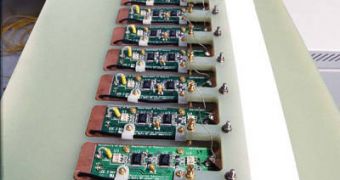In a surprising turn of events, experts at the Los Alamos National Laboratory (LANL), the same involved in the creation of the first atomic bomb, have announced the creation of radio transmitters that incorporate a radio wave source that moves faster than the speed of light (superluminally). Behind the amazing achievement has been a team led by John Singleton, who managed to figure out the basic principle required to make a phenomenon such as radio waves move faster than what Einstein said was an unsurpassed constant.
However, speaking recently in interviews, Singleton pointed out the fact that there was nothing about the current experiment that would make Einstein “mad” at him. He said that the great physicist's theory held that particle and information could not travel faster than the speed of light, but mentioned nothing about phenomena such as radio wave emissions. In their experiments, the LANL investigators noticed that radio waves moving faster than light exhibited unusual properties, such as losing less power over long distances, which could mean that possible applications in the field of communication are endless.
Its creators say that the device can be likened to a long line of people snapping their fingers. The first one does it, and then the second one has to do it as fast as possible, and so on. The speed at which the “snap” propagates through the line is given by the speed with which individual “snappers” do their job. In scientific terms, this means that the delay suffered by the “snap” is arbitrary, which means that the speed at which it moves is also arbitrary. What the researchers essentially did was minimize the delay (thus increasing the speed), to the point where they exceeded the speed of light.
The way they made this concept a practical reality was by building a long stretch of dielectric material, whose main trait is that it can be easily polarized. Every few inches, electrical amplifiers were attached to the dielectric, and each of them acted like a snapper. When the first is activated, it produces a strong electric field in the region around it, pushing positive and negative ions in opposing directions. When the first is turned off, and the second opened, the electric field essentially moves in the area around the second, and so on for the third, fourth, etc. This movement is known as a polarization current, and is considered among physicists to be an important source of radio waves.
The faster-than-light speed was obtained by switching the electrical amplifiers so fast on and off, that the radio waves thus generated reached the end of the stretch of dielectric material faster than photons traveling alongside it would have.

 14 DAY TRIAL //
14 DAY TRIAL //